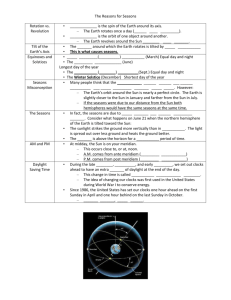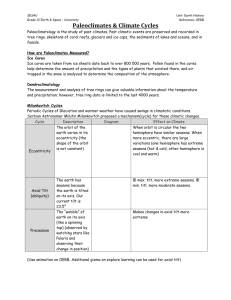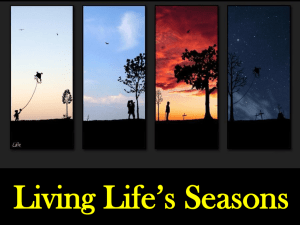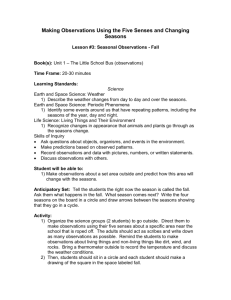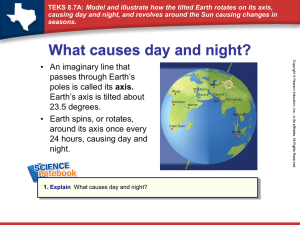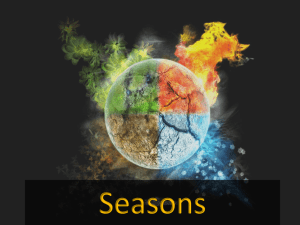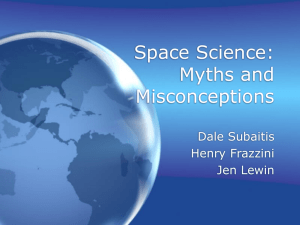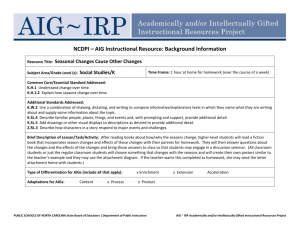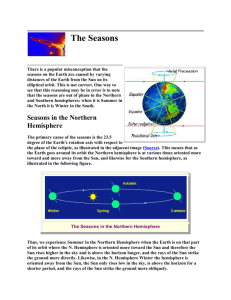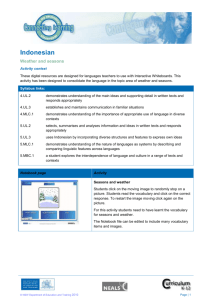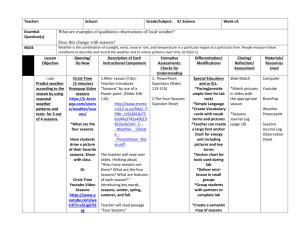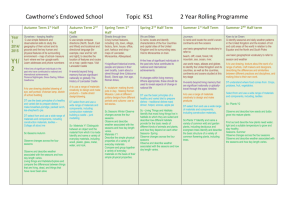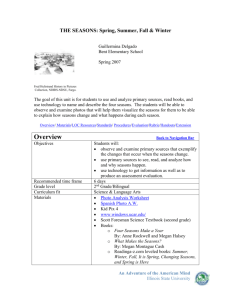What causes day and night?
advertisement
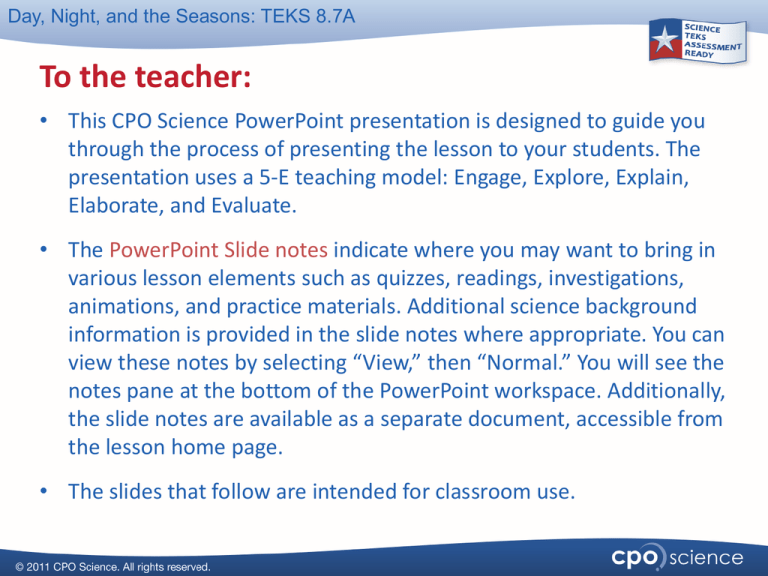
Day, Night, and the Seasons: TEKS 8.7A To the teacher: • This CPO Science PowerPoint presentation is designed to guide you through the process of presenting the lesson to your students. The presentation uses a 5-E teaching model: Engage, Explore, Explain, Elaborate, and Evaluate. • The PowerPoint Slide notes indicate where you may want to bring in various lesson elements such as quizzes, readings, investigations, animations, and practice materials. Additional science background information is provided in the slide notes where appropriate. You can view these notes by selecting “View,” then “Normal.” You will see the notes pane at the bottom of the PowerPoint workspace. Additionally, the slide notes are available as a separate document, accessible from the lesson home page. • The slides that follow are intended for classroom use. Day, Night, and the Seasons: TEKS 8.7A Mysterious Stonehenge • Stonehenge is a prehistoric monument completed 3,500 years ago in southwest England. It consists of a circle of giant stones (2.2 meters tall). The stones are precisely arranged so that on sunset on the shortest day of the year, the Sun appears to set over a particular stone. • Many archeologists believe that Stonehenge functioned as a kind of seasonal calendar as well as a festival site. • You can visit a replica of Stonehenge near Ingram, TX, just off of Highway 39. • Have you read about other prehistoric monument-calendars? Day, Night, and the Seasons: TEKS 8.7A Time to investigate! • Complete the lesson investigation: – Earth’s Seasons • What causes Earth’s seasons? Is it: – Changes in Earth’s distance from the Sun? – The tilt of Earth’s axis? – Both of these factors? – Something else? Day, Night, and the Seasons: TEKS 8.7A What causes day and night? • Earth rotates on its axis through one complete turn every 24 hours, marking off one day. • As Earth turns, part of the planet faces the Sun, and experiences daylight. • The opposite side of Earth faces away from the Sun, and experiences night. Day, Night, and the Seasons: TEKS 8.7A What causes the seasons? • As Earth revolves around the Sun, we experience seasons. • During summer in the Northern Hemisphere, the north end of Earth’s axial tilt is facing toward the Sun. • Six months later, the north end of the axial tilt is facing away from the Sun. The sunlight is more spread out and less intense. This brings winter to the Northern Hemisphere. Day, Night, and the Seasons: TEKS 8.7A Time for Practice! • Complete the lesson practice activity: – Distance from Earth to the Sun • In the Northern Hemisphere, is Earth closest to the Sun in summer or in winter? • Did the answer surprise you? • What does this tell you about the reason for Earth’s seasons? Day, Night, and the Seasons: TEKS 8.7A Show what you know! • Try the lesson’s interactive quiz, or complete a quiz that your teacher can print out for you. • Hint: – You might want to review your lesson reading piece one more time before trying the quiz.
